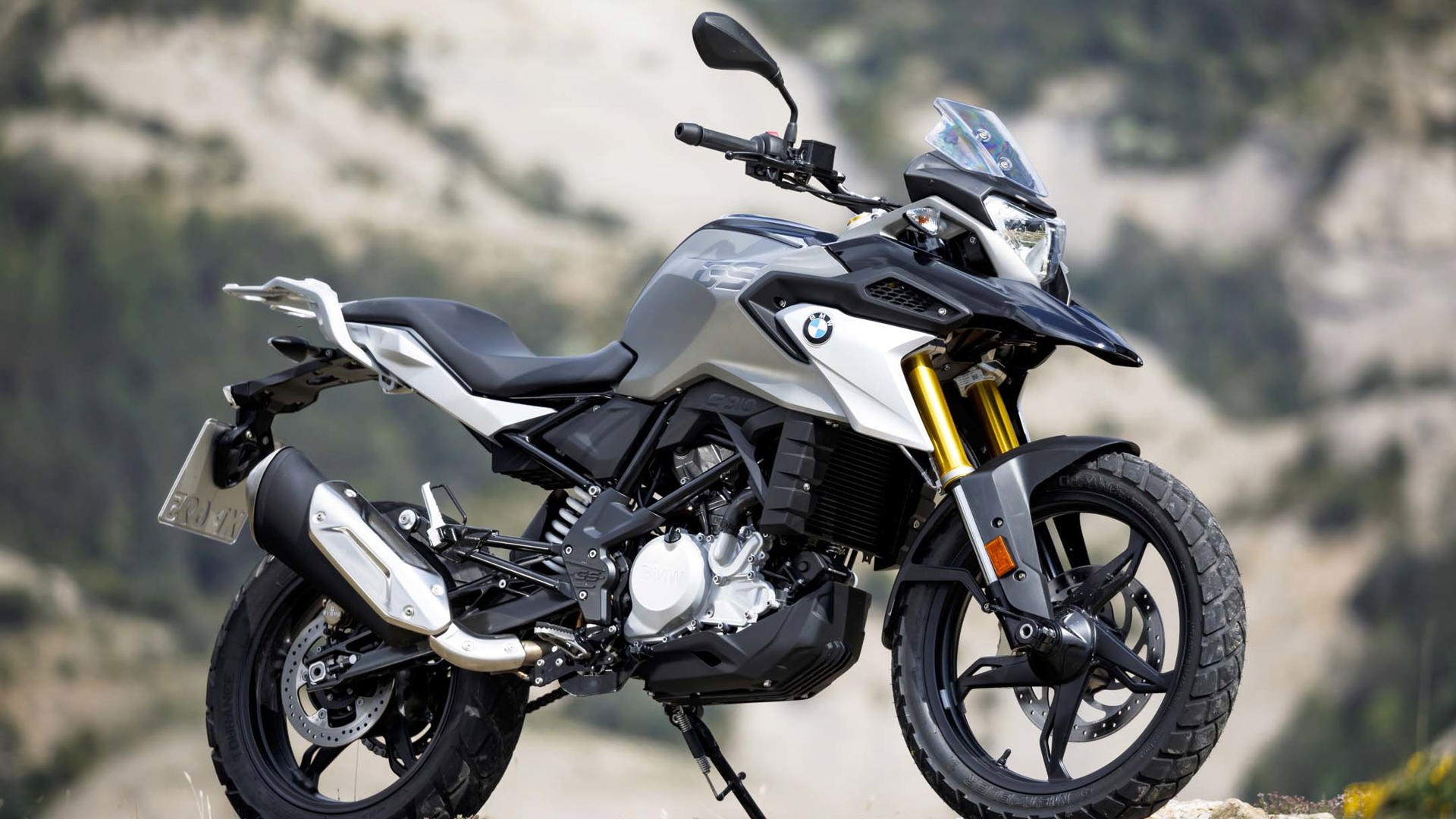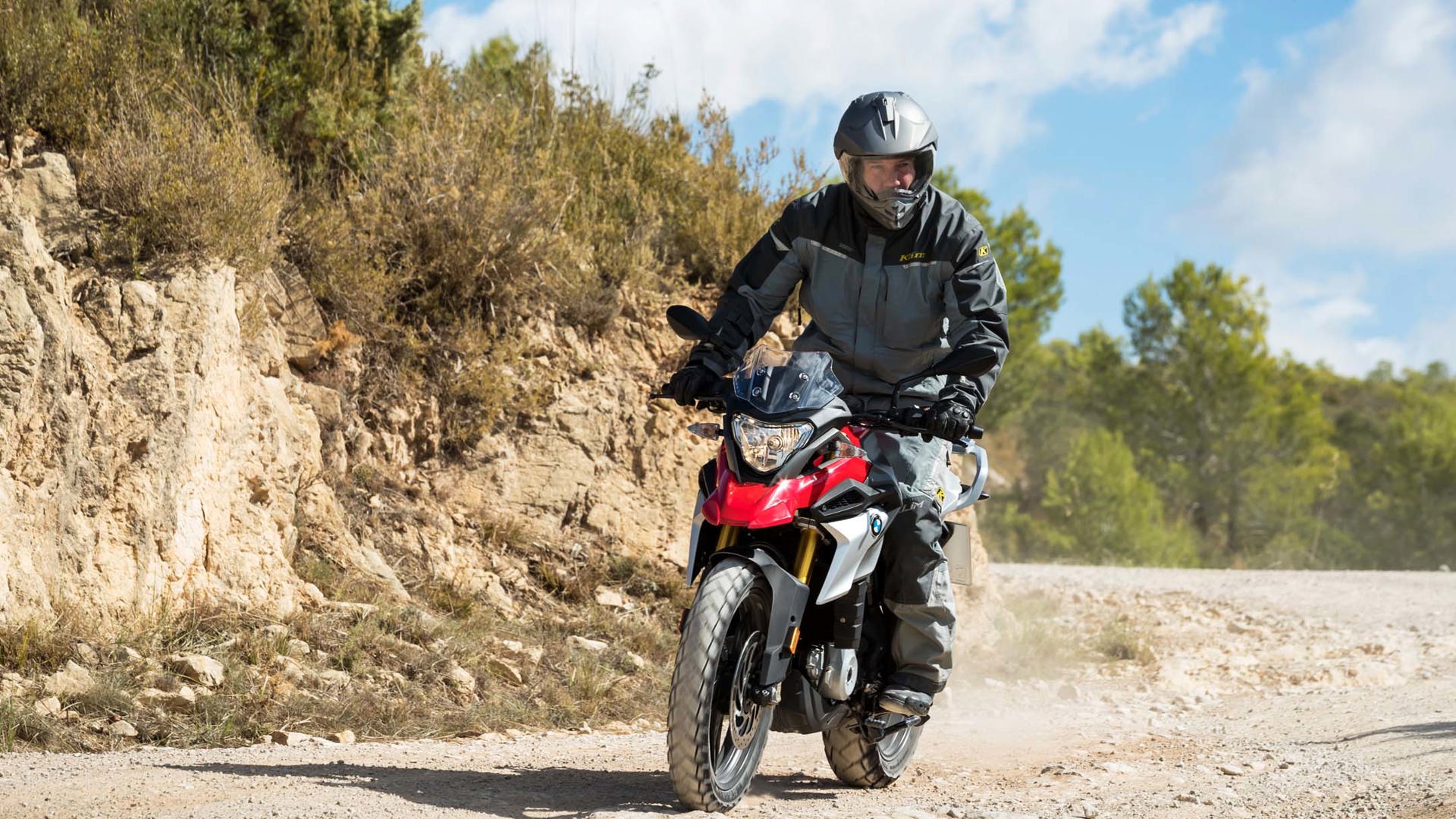BARCELONA, Spain – BMW’s new G310GS sure looks the part, but at just $6,450 and with only some 300 cubic centimetres to play with, can it possibly be worthy of the GS reputation?
Once in the seat, the thing feels like a featherweight, yet never shows bicycle-like nervousness or steering vagueness. On the contrary, on the road, the G310GS feels like a proper, almost full-size motorcycle, albeit a very light one
Within the motorcycling universe, the BMW GS is a giant. That adventure trend you’ve steadily seen growing these past years, all – as in all – those rugged-looking bikes out there selling you the idea you could leave everything behind and begin a globetrotting life, all of it starts with BMW’s first adventure bike, the 1980 R 80 G/S. Fast forward almost 40 years and although it now has enough rivals to form a healthy category, the current version of that bike – the 20 grand, 1,200 cc, 238 kg R1200GS – pretty much remains the class standard.
With all that in perspective and adding the fact that BMW Motorrad specialty is relatively pricey, high-end, large displacement machines, one could be forgiven for showing skepticism about an India-built, entry-level 313 cc GS costing three times less.
I had seen a prototype of the G310GS almost exactly a year before the Barcelona launch. My first impression was somewhat of a shock as it didn’t feel like I was looking at a 300 cc-class bike. It I had to guess, I would have said it was a 650. The bike was tall, had a typical ADV beak, a sturdy-looking rear luggage rack, a beefy fork with plenty of travel and styling every bit as sexy as, say, one of the middleweight GSs. Actually, the entire thing looked so good and credible my biggest concern was pricing: India-built or not, these characteristics add up.
The $6,450 Canadian price was just announced at the launch and considering what it buys, it’s fair. It’s low by BMW standards, but about on par with a 2017 Honda CRF250 Rally ($6,299, non-ABS only) or a 2017 Kawasaki Versys-X 300 ($6,399 with standard ABS). A three-year warranty and standard switchable ABS on the Beemer make it that much more appealing. In the end, price-wise, BMW hasn’t been arrogant at all with the G310GS, which seems to mean it’s positioning it with humility, as a product that should be judged on its merits. Good, let’s see then.
For 99 percent of observers, the fact that the G310GS is built in India by TVS – a BMW first – simply isn’t visible. According to BMW staff present at the launch, the main reason both the G310GS and the naked G310R (which use the same engine and frame, and share numerous parts) have been delayed is the unsatisfactory quality of some vendor-provided components. They didn’t go as far as to mention which parts were not accepted by BMW, but they explained that even in the case of a minor component, if it didn’t meet a level of quality the brand judged appropriate, it wasn’t accepted. The time it took to correct whatever didn’t satisfy them or to find another vendor altogether were the reasons for those delays. One thing’s for sure, whether just looking at the bike or sitting on it for the first time, the G310GS looks and feels like a normal, world-class motorcycle from a major brand, and that feeling stays once you start moving.
One of the little GS’ goals is obviously to be accessible to new riders and at that, it succeeds. Its looks may suggest a motorcycle of substantial proportions, but it’s all a bit of an optical illusion as once in the seat, the thing feels like a featherweight, yet never shows bicycle-like nervousness or steering vagueness. On the contrary, on the road, the G310GS feels like a proper, almost full-size motorcycle, albeit a very light one. It’s an important nuance that makes it pleasant even to an experienced rider who’ll perceive it as an extraordinarily easy to ride adventure bike rather than just as a novice motorcycle.
That sense of “small but serious” is felt again and again as seat time increases. For instance, once we finally hit some dirt roads maybe a couple of hours outside of Barcelona, what had felt up to that point like soft suspension well suited for real road conditions – not uncommon on small cc models – instantly transformed into a suspension capable of handling light off-road riding very well. Actually, in those conditions, the little GS proved a truly fun ride, a characteristic due in big part to very little mass having to be pushed around, but also to the credible and appropriate way it reacted when maneuvered on a rocky trail. Good adventure bikes handle a certain way: neither like a motocross nor a street bike, but somewhere in between. While the 310 may not feel invincible off-road, it’s still seriously capable, enough so that it wouldn’t have any trouble following a R1200GS. At a recreational pace, an average rider would even undoubtedly feel more relaxed and work quite a bit less on the 310 than on the bigger and heavier 1200.
The 310 does have legitimate off-road capabilities, but there is a caveat. For some weird reason having absolutely nothing to do with the bike itself, no fewer than five bikes crashed lightly during our test day (my theory is experienced riders thinking nothing could possibly go wrong on a tiny 310). In case someone is wondering, the norm is just about zero during those events. One of those crashes happened in the dirt. Considering the low speed of the incident, the extent of the damage was unexpected. A muffler bent almost to the wheel and a considerably bent handlebar rendered the bike essentially unridable. Many components also showed surprisingly deep dents. My experience is good adventure bikes like the 1200GS or the big KTMs handle minor falls way better. The lesson here is if anyone intends to ride their G310GS aggressively off-road, investing in good crash bars before getting dusty could prove a wise move.
Back on the pavement, after taking it easy for a few turns to clean the G310GS-specific Metzeler Tourance tires, our leader brought us to a seriously twisty section and turned the volume to about nine. I was right behind him and It. Was. Fun. As one would expect, the 34 hp single has to be mercilessly revved and the six-speed tranny constantly worked for a sporty rhythm to be maintained. But there’s just enough mid-rpm torque and high-end power to make the exercise a surprisingly enjoyable one. The backward single (intake is in front, exhaust at the back) is unexpectedly loud and vibrates quite a bit from mid to high revs, but it does succeed in decently accelerating bike and rider. Highway speeds are maintained without any issues as top speed is somewhere around 140 km/h.
What was unexpected, however, was the remarkable composure of the chassis in those conditions. Considering how compliant the suspension was both on bumpy pavement and in the dirt, I wouldn’t have been surprised if the 310 began to dance and weave once the rhythm got sporty, but it didn’t. Actually, other than a front end that dove a bit during ham-fisted braking and a sufficient, but not impressive front brake, the little GS handled our abusive riding like a boss. It was light, stable, precise and communicated tire grip with accuracy, all of which made for a genuinely fun ride.
I liked riding the G310GS. As a rider with a good amount of experience, I personally wish there’d be a snappy 450 in there. What a hoot that would be! But as the entry-level ADV machine it’s intended to be, the little GS delivers on all counts. Maybe the most complimentary thing I could say about it is that it’s a real GS and a legitimate small version of the 1200GS. BMW’s big GS has the still unique ability of doing everything right. It goes from short urban rides to long-distance travel and from off-roading to sport-riding in an absolutely seamless way. The little G310GS is obviously less refined and desirable than the 20 grand, Boxer-powered top of the line model. But that seamless way it jumps from one type of riding to another isn’t just very reminiscent of the 1200, it’s downright stupefying on a bike worth six and a half grand.




















































